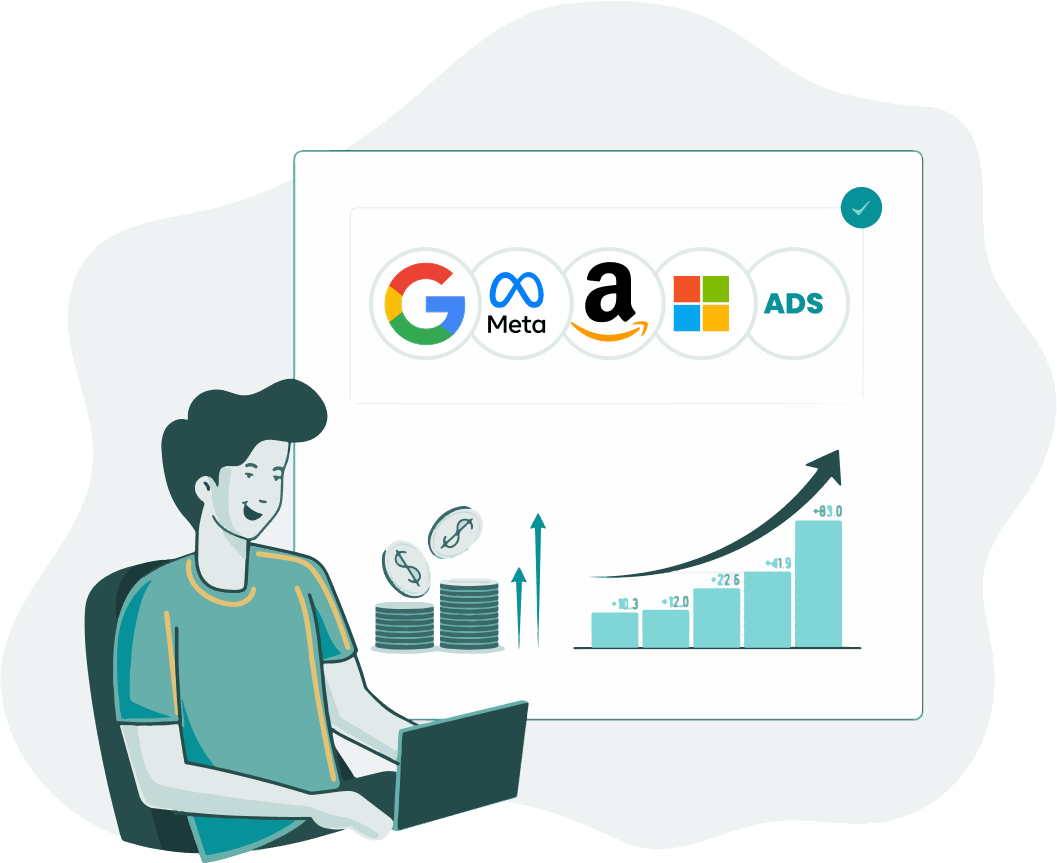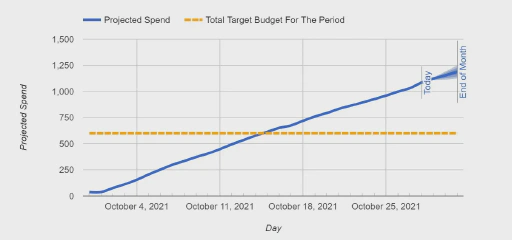Search advertising is typically easier when you have deep pockets. But even small and growing businesses can and do compete by making smart, calculated decisions that give them the most value from their ad spend.
One of the easiest ways to measure whether your decisions are providing the desired financial outcomes is ROAS – return on ad spend. This metric is calculated by ad platforms as your total Conversion Value divided by how much you spent on Ads.

The Best Way to Improve Your ROAS
You can improve your ROAS in two ways:
- Increase conversion value
- Decrease costs
But it’s not really an either/or situation. Here’s why: Increasing conversion value without any real reason just creates an artificially high ROAS. And while you can do things to decrease costs – like spend most of your budget on profitable campaigns – lowering your ad spend or CPC bids too much leads to your ads being seen less frequently.
So the best practice in optimizing to improve ROAS is a combination of keeping costs in check while also making sure your ad is seen as often as possible by the right audiences. And it starts with the profit margin on the products being advertised.
Trying to unearth and piece together different data sets to identify key problem areas can be a long and tedious process. But you can find out why your ROAS is trending in the wrong direction in just a few minutes using the Optmyzr PPC Investigator. The tool displays a ‘Cause Chart’ indicating exact areas of wasted spend, overinvestment, and other underlying causes of lower-than-ideal ROAS.
Calculating your breakeven ROAS
Once you have a number for your profit margin, the next step is to figure out your break-even ROAS.
This is usually calculated as 1 divided by the profit margin in percentage form. So a 50% profit margin would yield a break-even ROAS of 200%:
- You make $50 in profit on a $100 conversion
- At a ROAS of 200%, you spend $50 on ads to make a $100 sale
- All of your $50 margin goes towards the cost of advertising
As you spend less per conversion and your ROAS goes up, more of your margin stays in the bank instead of going to Google or Facebook. In the same example, a ROAS of 400% means only $25 of your margin goes to ad spend.
So while a 200% ROAS might look profitable on paper, it doesn’t necessarily mean your business is making money.
Maximizing Profits with Optimal ROAS Target
Finding the optimal ROAS target to maximize profits involves a series of cost-reduction optimizations including:
- Limiting or eliminating overspending
- Prioritizing profitable campaigns
- Grouping products with similar margins together
- Adding expensive, non-converting terms as negative keywords
- Fine-tuning targeting or bid adjustments
Remember, there’s usually a tradeoff between ROAS and volumes. Generally, it’s difficult to achieve high numbers for both, so high-volume conversions tend to have a lower ROAS and vice versa.
Tracking Your ROAS Improvement
As with any outcome, it’s important to use performance indicators both in and beyond the ad platforms to see how much progress you’re making.
We recommend tracking the following metrics at different stages of your ROAS-improving effort.
Beginner Stage
Beginner metrics are for when you want an initial lift. At this stage, you want to track Conversions, Click-through Rate, Conversion Rate, and Quality Score.
These beginner metrics give you an idea of whether your conversions are growing as you optimize at a stage where reducing ad spend is rarely an option.
Intermediate Stage
These are the metrics you want to start tracking after achieving some degree of growth: Cost, Views, Clicks, Impressions, Cost Per Acquisition, Cost Per Click, Cost Per View.
Tracking these intermediate metrics is ideal for when you start to look at your account performance at a more granular level and begin the process of reducing how much you spend on each user.
Advanced Stage
Finally, when your campaign is running like a well-oiled machine you want to track Lifetime Value, Conversion Rate by Channel, Absolute TopImpression Share.
The advanced metrics help you better understand PPC’s contribution to the business on a level that goes beyond advertising, and help you optimize when factors like brand awareness and loyalty are relevant.
More on Managing ROAS
When your PPC account is performing well and receives a significant financial boost, it can be difficult to maintain returns. Here’s what you can do.
We at Optmyzr also have various tools including our pre-built Rule Engine strategy to manage bids to a target ROAS. Get in touch with our customer support team and we’d be happy to help!
Going beyond ROAS
ROAS is an important metric, but at the end of the day it is a metric set by Google and it might not always correspond with your bigger business goals. Take a look at what industry experts have to say about this here.









